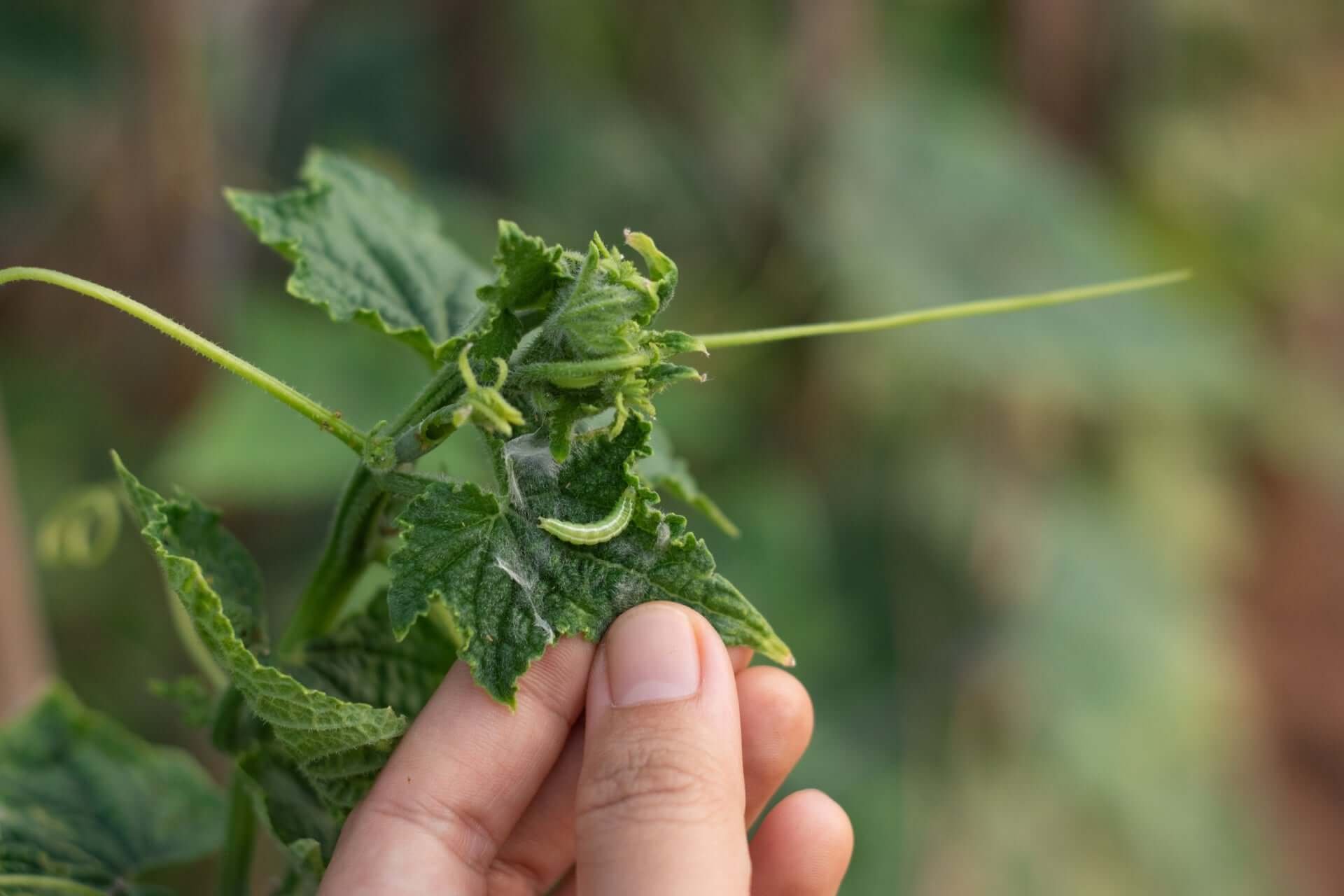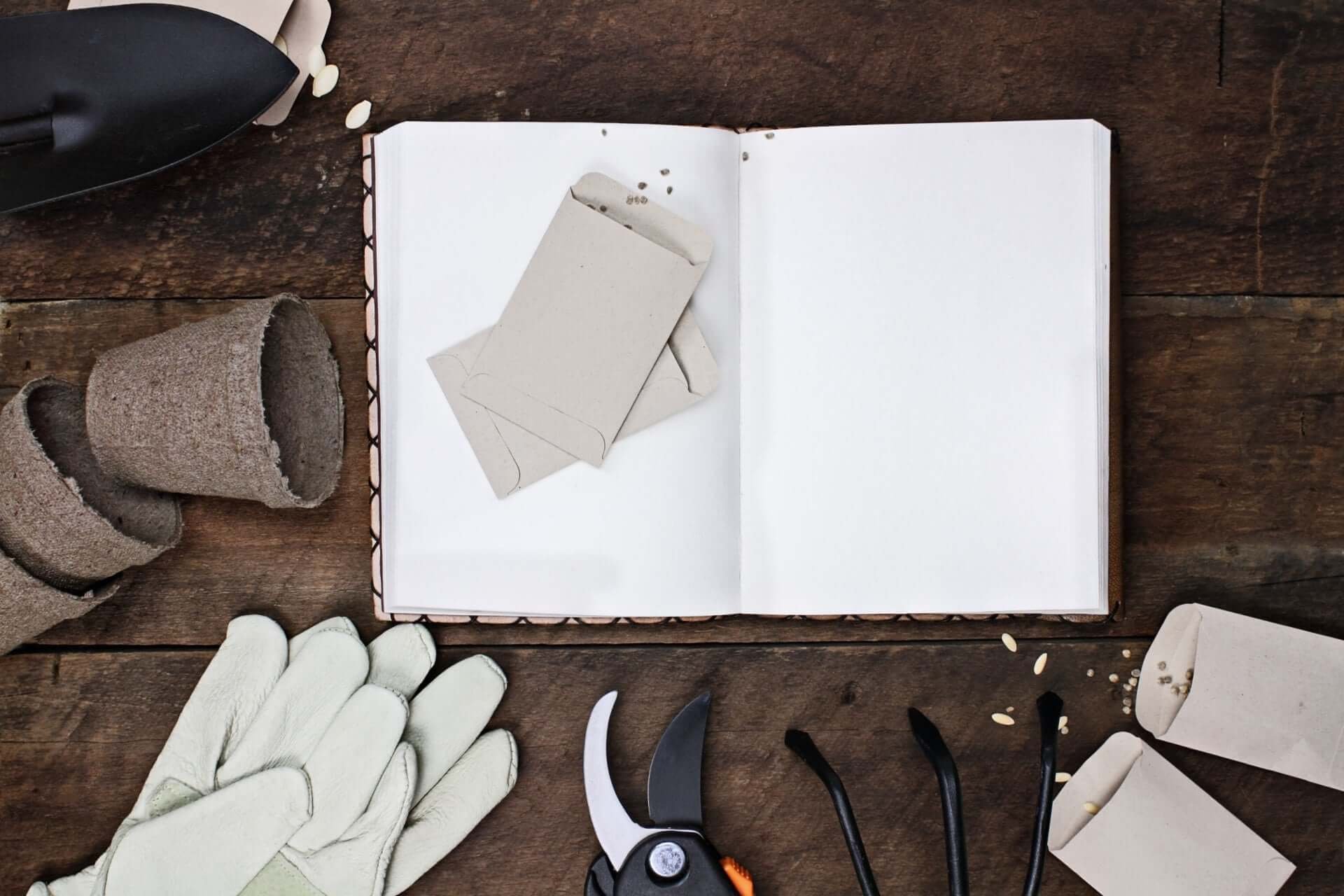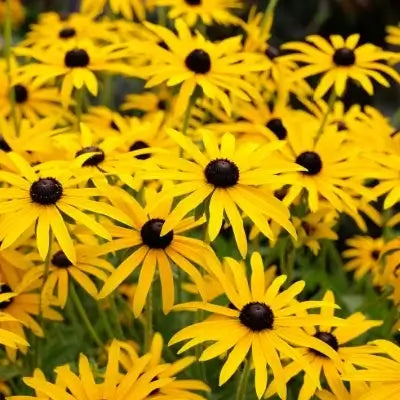Why plant herbaceous perennials?
Herbaceous perennials are valued and praised by gardeners for their resilience. Few gardens are without at least one perennial plant. Many are easy to grow and can reward you for years (or decades) to come.
There are many benefits to planting herbaceous perennials; here are a few:
- They attract pollinators and beneficial insects
- Herbaceous perennials will return yearly
- Many of them can self-seed or be divided, giving you more plants
- They are a cost-effective way to make a gorgeous space with less maintenance
What is a perennial?
A perennial is a plant that lives for three or more years and continues to grow after reproduction. Simply put, perennials will return yearly; some can even live hundreds of years.
There are two types of perennials: woody and herbaceous.
Woody perennials are just how they sound– woody! Their stems have more texture than herbaceous perennials and do not die back in winter.
Herbaceous perennials have frost-tender stems that die in winter and then regrow in spring and summer. This cycle repeats yearly for as long as the plant lives.
What is an annual?
An annual is a plant that grows vegetation, flowers, and seeds and dies off in a single year. Annuals may spread enough seed to return the following year, but it’s not always guaranteed.
What is a biennial?
A biennial is a plant that grows vegetation the first year, and in the second year, it flowers and seeds, then dies off. Some common biennials are carrots, foxgloves, and hollyhocks.
How are herbaceous perennials different from woody perennials?
Herbaceous perennials have vegetation that dies while the roots remain alive. Herbaceous perennial plants will regrow their vegetation the following year.
Woody perennials have stems that do not die in winter. Instead, their stems grow a little more each year. Technically, shrubs fall into this category (even though we don’t categorize them as perennials).
Why do I need to know what zone I live in?
It's important to know what zone you live in so you can make the best decision when buying plants. If you end up buying perennial plants in other zones but not yours, it can be unpleasant to discover that they didn't regrow the following year.
Knowing your zone helps you make the right plant purchasing choices. This saves you from having to re-purchase or replace plants. Knowing your zone means that your time and money will be well spent!
Where can I find herbaceous perennials?
Most nurseries have herbaceous perennial plants for sale, but they can be tricky to track down. Because most nurseries profit from selling annuals, few offer many options.
Here at Tennessee Nursery, we specialize in growing and selling native perennials. In fact, 94% of our stock is native plants!
Growing native plants increases food supplies for butterflies and other pollinators. Additionally, it encourages the presence of beneficial insects, resulting in a more balanced ecosystem.
List of herbaceous perennials:
Ajuga Reptans

Ajuga reptans is an herbaceous perennial that tolerates a wide range of soils. It makes an excellent ground cover and looks great in containers.
Zones: 3 to 9
Sun exposure: Full sun
Mature height: up to 8 inches
Water: Average
Best for front of borders, containers, and as a groundcover
Check out the Ajuga Reptans product here
Bellflower plant

Zones: 4 to 9
Sun exposure: Part sun to part shade
Mature height: up to 2 feet
Water: Average
Best for alpine gardens, woodland gardens, front of borders, and containers
Check out the Bellflower Plant product page here
Blazing Star

Blazing star is one of those show-stopping plants that neighbors and friends can't help but ask, "Where did you get that?" It is a tall grower and does best in large gardens or in the back of a border where it can stand out.
Zones: 3 to 9
Sun exposure: Full sun
Mature height: 3 to 6 feet
Water: Average
Best for the back of borders, pollinator gardens, and cottage gardens
Check out the Blazing Star product page here
Blue Vervain

Blue vervain is a herbaceous perennial that pollinators are immediately drawn to. Its spires of purple flowers look good in meadows and cottage gardens alike.
Zones: 3 to 9
Sun exposure: Part sun to part shade
Mature height: 2 to 6 feet
Water: Average
Best for the back of borders, backgrounds, and pollinator gardens
Check out the Blue Vervain product page here
Foam Flower

This plant can grow in many soil types with plenty of shade. Foam flowers have fuzzy-looking flowers that stand in spikes above their foliage.
Zones: 3 to 8
Sun exposure: Full shade
Mature height: up to 2 feet
Water: Average
Best for the middle of borders, woodland gardens, and shaded gardens
Check out the Foam Flower product page here
Geranium

The herbaceous perennial geraniums are native to North America and grow easily in most zones. Their delicate flowers bloom in a bright purple color. Additionally, they have eye-catching foliage. What could be better?
Zones: 3 to 8
Sun exposure: Full sun
Mature height: up to 2 feet
Water: Average, tolerates poor soils
Best for woodland gardens, borders, and containers
Check out the Geranium product page here
Goat’s Beard

Goat's beard is an herbaceous perennial with fronds of creamy white flowers. When in bloom, it has an almost unearthly appearance. Beneficial insects love this plant.
Zones: 3 to 7
Sun exposure: Part sun to part shade
Mature height: up to 3 feet
Water: Average to moist
Best for the middle of borders, backgrounds, and pollinator gardens
Check out the Goat's Beard product page here
Goldenseal

Goldenseal is named for its appearance like a wax seal. It is a low grower and makes an excellent addition to any woodland garden.
Zones: 3 to 7
Sun exposure: Part sun to part shade
Mature height: up to 12 inches
Water: Average to moist
Best for borders and woodland gardens
Check out the Goldenseal product page here
Jacob’s ladder

Jacob's ladder is an easy-to-grow, low-maintenance plant. The flowers of this herbaceous perennial sway in the breeze, perched atop their tall stems. Jacobs ladder has a spreading habit and will fill in its area nicely.
Zones: 3 to 8
Sun exposure: Full shade
Mature height: up to 3 feet
Water: Average to moist
Best for woodland gardens and alpine gardens
Check out the Jacob's Ladder product page here
Jewelweed

The iconic jewelweed is a staple of many people's childhoods. The seed pods explode when gently squeezed. Having an entertaining and beautiful plant could make any gardener happy!
Zones: 3 to 11
Sun exposure: Full sun
Mature height: 3 to 5 feet
Water: Average to moist
Best for pollinator gardens, woodland edges, and natural borders
Check out the Jewelweed product page here
Yellow Trillium

Yellow trillium is a herbaceous perennial that belongs in a Vincent Van Gough painting. Its patterned leaves and mellow hues add serenity to any garden. aside from its good looks, it is easy to grow and take care of.
Zones: 4 to 9
Sun exposure: Part sun to part shade
Mature height: 8 to 14 inches
Water: Average
Best for use as a groundcover, front of borders, woodland gardens, and alpine gardens.
Building a Bed Designed for Herbaceous Perennials
Constructing a garden bed for herbaceous perennials delivers recurrent visual interest through color and texture that enhances your landscape annually. Perennials that perish each winter to the soil level and return each spring deliver enduring floral beauty without needing annual replanting. Careful planning and construction methods enable you to establish an attractive garden space that requires little maintenance for your perennial plants to prosper. This step-by-step guide will show you how to construct a garden bed designed explicitly for herbaceous perennial plants.
1. Choosing the Location
Choose a location that provides the sunlight needs of your chosen perennial plants. Most herbaceous perennials prefer sunlight exposure exceeding six hours per day, while some species thrive in partial sun to full sun conditions. Record all trees, shrubs, and structures that might produce shade in the selected area. Ensure your bed location is convenient for watering access and visually complements the rest of your garden. Choosing a plant location with good visibility lets you detect problems early and witness seasonal changes.
2. Determining Bed Shape and Size
Bed shapes can be formal or informal. Free-form curved edges look natural and integrate smoothly with the surrounding landscapes. Straight or rectangular edges will produce a more formal appearance. Choose a bed size that provides adequate space for your plants to spread while remaining easy to maintain. While large beds offer options for diverse plantings, beginners in perennial gardening should start with a moderate-sized bed for better learning of care and maintenance techniques.
After deciding on the garden bed shape, use stakes and string to mark the outline or lay a garden hose on the ground to show the contours. If the shape of your garden bed looks incorrect before you start digging, you can easily modify it.
3. Preparing the Soil
The longevity and health of your perennial plants depend heavily on maintaining high-quality soil. The first step involves clearing out sod alongside weeds and debris from the chosen location. Mix in compost or manure to prepare the soil by double-digging or tilling to a depth around 12 inches ( or 30 cm). This procedure strengthens soil structure and boosts fertility while ensuring proper drainage, which remains essential for many perennial species.
Pay attention to soil pH. Herbaceous perennials generally thrive in slightly acidic to neutral soil conditions (pH 6.0–7.0), but their specific pH preferences differ. To understand soil pH and nutrient levels, perform a basic soil test, which is available at garden centers or through local extension services. Modify soil pH levels by adding lime to increase pH or sulfur to decrease pH when needed.
4. Incorporating Drainage and Edging
Proper drainage becomes essential because herbaceous perennials generally dislike waterlogged soil conditions. You can improve compacted or naturally heavy soil types such as clay by incorporating coarse sand or grit into your compost mixture. Raised beds can keep plant roots above the water table where standing water occurs.
Bricks, stones, or plastic edging defines garden bed shapes while preventing unwanted grass and weeds from growing in the area. Edging also enhances the polished appearance of the planting area, making it easier to maintain over time.
5. Selecting Perennials
This is the fun part. Choose plants that require matching conditions for light exposure and soil moisture to achieve cohesive growth. Plan your planting strategy around bloom durations to maintain gardening interest during the season. Begin with early-season flowers such as Lupines and Columbines and follow with mid-season varieties like Echinacea (coneflower) and Daylilies, then finish the display with late-season blossoms like Asters and Chrysanthemums. Creating a visually balanced design requires focusing on how leaf texture contrasts with plant height variations. Forming plant groupings in threes or fives creates a natural look that helps pollinators spread more effectively.
6. Planting Techniques
Create planting holes that measure twice the width and slightly more depth than the root ball of each plant. If the roots look pot-bound, carefully separate them with your fingers. When planting in settling soils, the crown should be positioned at ground level or slightly elevated. Fill around the plant with the original soil and any remaining compost. Eliminate air pockets by pressing gently around the plant roots before thoroughly watering the area.
7. Mulching and Watering
Organic mulch layers like shredded bark or straw help maintain soil moisture levels, prevent weed growth, and safeguard roots from temperature changes. Position mulch at least a couple of inches away from plant stems to avoid rot development. During the establishment phase, which typically lasts throughout the first growing season, you need to maintain evenly moist soil by regular watering without creating waterlogged conditions. Herbaceous perennials become drought-resistant once established but require monitoring of rainfall and weather patterns to decide if additional watering is needed.
8. Ongoing Maintenance
Deadheading spent flowers supports extended blooming periods in plants. Remove dead foliage in autumn following the first hard frost, but you may choose to keep seed heads for seasonal interest or to provide food for wildlife. Perform periodic division of dense perennials to sustain their strength and avoid overcrowding. Watch and appreciate your perennial garden's seasonal color and texture shifts.
The success of your herbaceous perennial garden bed depends on selecting a suitable location, soil preparation, and choosing the proper plant species. The garden bed will provide you with beautiful, diverse blooms and a deeply satisfying gardening experience during construction and upkeep.











































































































